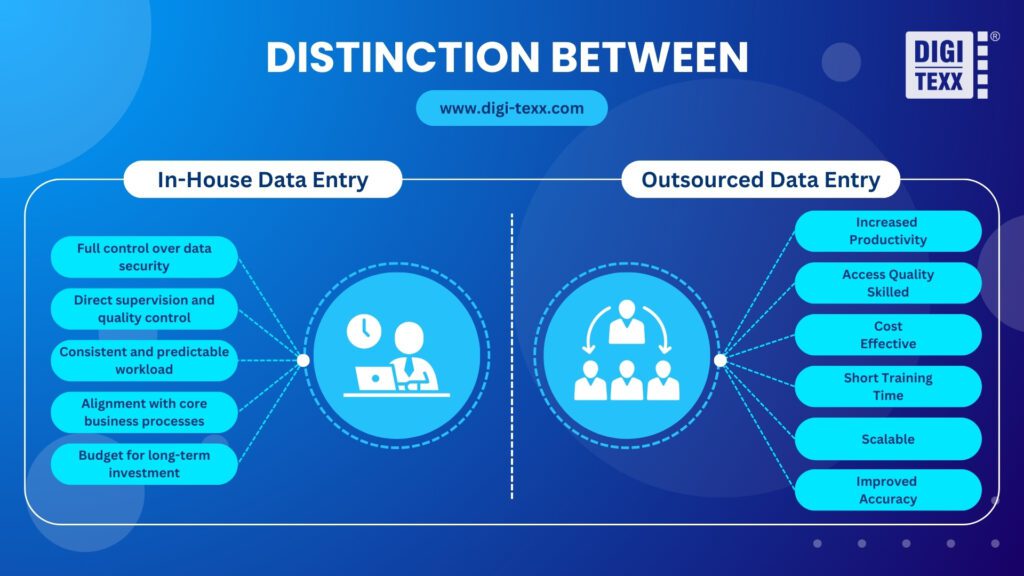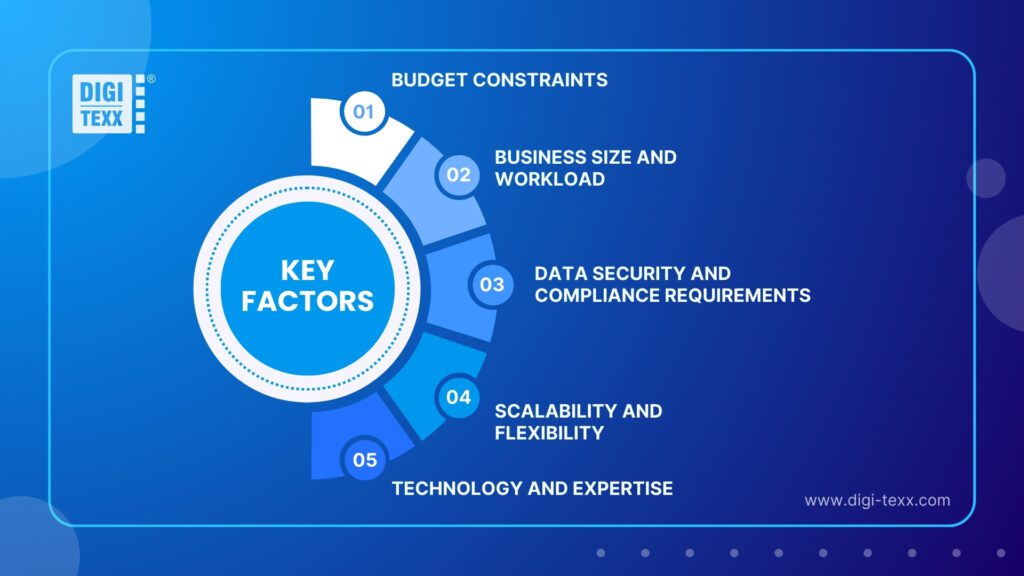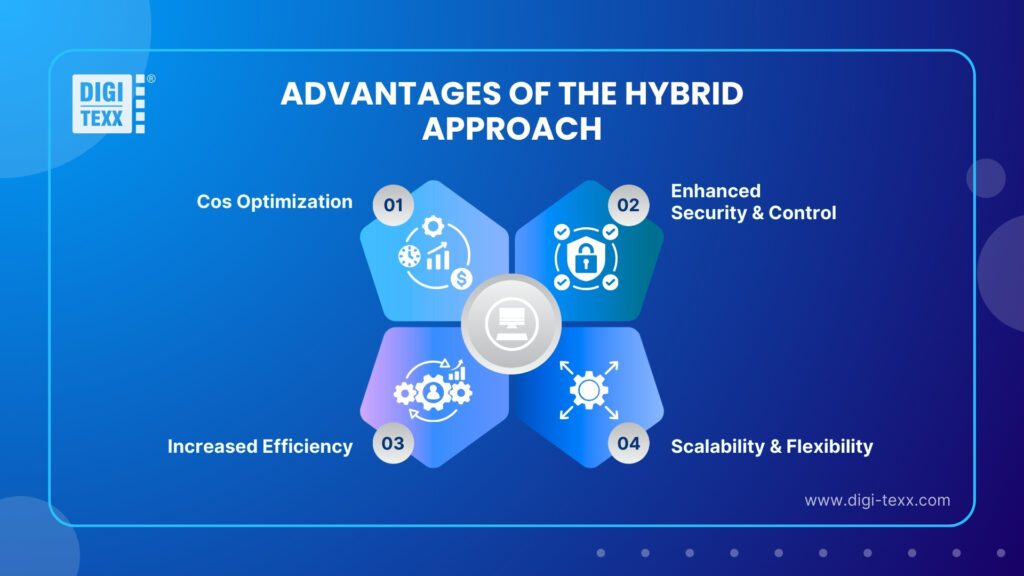Businesses rely heavily on efficient data entry to manage records, process transactions, and maintain accurate customer information. However, one critical decision that organizations face is whether to handle data entry in-house or outsource it to third-party providers. This choice can significantly impact operational efficiency, costs, and data security.
In-house data entry involves hiring, training, and managing an internal team, offering direct control over processes and security. While this approach ensures seamless communication and quality oversight, it also requires substantial investment in salaries, infrastructure, and software.
On the other hand, outsourcing data entry to specialized providers offers a cost-effective and scalable solution, allowing businesses to focus on core operations. However, it comes with challenges such as data security risks and potential communication barriers.
The right choice depends on various factors, including business size, budget, workload volume, and data sensitivity. In this article, we’ll compare the advantages and drawbacks of both in-house and outsourced data entry, explore key decision-making factors, and help you determine the best approach for your business needs.

In-House Data Entry vs Outsourced Data Entry – Definition
Understanding In-House Data Entry
In-house data entry refers to the practice of managing data entry tasks within a company by hiring and maintaining an internal team. This approach allows businesses to have complete control over the process, ensuring that sensitive data remains within the organization. Companies that choose in-house data entry typically invest in hiring skilled employees, providing training, and utilizing dedicated software and infrastructure to streamline operations.
This model is often preferred by businesses that handle highly sensitive information, such as financial institutions, healthcare providers, and government agencies, where strict compliance and security are top priorities. Additionally, companies that require real-time data processing and close coordination with other departments may find in-house data entry more efficient.
However, managing an in-house team comes with challenges. It requires significant financial investment in salaries, benefits, office space, and technology. Additionally, businesses must account for recruitment, training, and ongoing management efforts to maintain productivity and accuracy.
Understanding Outsourced Data Entry
Outsourced data entry involves delegating data management tasks to third-party service providers, often located in different countries with lower labor costs. This model is particularly attractive for companies looking to reduce operational expenses, increase efficiency, and scale their data entry needs without investing in additional in-house resources.
Outsourcing providers specialize in handling high-volume data entry tasks efficiently, leveraging automation tools, advanced software, and trained professionals. Many businesses, from startups to large corporations, outsource data entry to focus on core operations while benefiting from a cost-effective, streamlined workflow.
One of the primary advantages of outsourcing is scalability. Businesses can easily adjust their data entry requirements based on fluctuating workloads without the burden of hiring or laying off employees. Additionally, outsourcing provides access to expertise and advanced technologies that may not be feasible to develop in-house.
Despite these benefits, outsourcing also comes with potential risks. Data security is a major concern, as businesses must ensure that their third-party providers follow strict security protocols and compliance standards. Communication barriers, time zone differences, and quality control challenges can also arise, requiring businesses to carefully select reliable outsourcing partners.
| Factor | In-House Data Entry | Outsourced Data Entry |
| Control & Security | Full control over data and security, suitable for sensitive information. | Data security risks depend on the provider; require strict compliance checks. |
| Cost | Higher costs (salaries, benefits, infrastructure, training). | Cost-effective, as labor and infrastructure expenses are lower. |
| Scalability | Limited by in-house resources; scaling up requires additional hiring and investment. | Highly scalable; businesses can easily adjust workload demands. |
| Expertise & Technology | Require investment in software and employee training. | Access to skilled professionals and advanced data entry tools. |
| Operational Efficiency | Direct supervision ensures quality but may slow processes. | Faster processing due to automation and dedicated teams. |
| Flexibility | Less flexible: workload variations can cause inefficiencies. | High flexibility: providers can quickly adapt to changing needs. |
| Communication | Seamless communication within the organization. | Potential communication barriers (time zones, language differences). |
| Use Cases | Ideal for businesses handling confidential data or requiring close coordination. | Best for businesses looking to reduce costs and manage large volumes efficiently. |
Pros and Cons of In-House Data Entry and Outsourced Data Entry
| Factor | In-House Data Entry | Outsourced Data Entry | ||
| ✅ Pros | ❌ Cons | ✅ Pros | ❌ Cons | |
| Control & Security | Full control over data security. | High risk of insider threats if security measures are weak. | Providers follow security standards, but security depends on the vendor. | Data breaches or mishandling risks if the provider lacks strong security measures. |
| Cost | No external service costs. | High expenses (salaries, benefits, office space, software). | Cost-effective, reduces infrastructure and labor costs. | Hidden costs if additional services are needed. |
| Scalability | Better control over workload distribution. | Limited scalability; requires hiring more staff. | Easily scales up or down based on demand. | Sudden demand spikes may affect quality or pricing. |
| Expertise & Technology | Customizable processes and workflows. | Require continuous investment in software and training. | Access to skilled professionals and the latest technology. | It may lack customization for specific business needs. |
| Operational Efficiency | Immediate coordination with other teams. | Slower processing due to manual handling. | Faster turnaround due to automation and dedicated teams. | Quality may vary between providers. |
| Flexibility | Employees can multitask within the organization. | Less flexible; adjusting workforce takes time. | High flexibility to adjust to workload changes. | Dependence on an external provider’s availability and policies. |
| Communication | Direct, real-time interaction with the team. | Require internal team management and supervision. | No need to manage employees directly. | Communication challenges (time zones, language barriers). |
| Quality Control | Higher accuracy due to direct supervision. | Errors can occur if employees are overworked or untrained. | Providers often have dedicated QA teams for accuracy. | Less direct control over quality assurance processes. |
Key Factors to Consider When Choosing Between In-House and Outsourcing
Deciding between in-house and outsourced data entry requires careful evaluation of multiple factors. Each business has unique needs, and the right choice depends on factors such as budget, security requirements, workload, and long-term growth strategies. Below are the key considerations:

1. Budget Constraints
Cost is one of the most significant deciding factors. In-house data entry requires substantial investment in hiring, salaries, benefits, office space, software, and training. While it provides better control, it can be expensive, especially for small and medium-sized businesses. On the other hand, outsourcing is typically more cost-effective, as it eliminates the need for infrastructure investment and allows businesses to pay only for the services they use. However, hidden costs such as contract fees or additional charges for revisions should be considered.
2. Business Size and Workload
The scale and volume of data entry tasks also influence the decision. Large enterprises with a continuous flow of data may find in-house teams more suitable for maintaining consistency and control. Meanwhile, businesses with fluctuating workloads, such as seasonal industries, benefit from outsourcing since they can scale services up or down without the hassle of hiring or layoffs.
3. Data Security and Compliance Requirements
If a company handles highly sensitive data such as financial, healthcare, or legal records, strict data security protocols are crucial. In-house data entry allows businesses to maintain tighter control over security and compliance with regulations such as GDPR, HIPAA, or ISO standards. Outsourcing, however, involves sharing data with third-party providers, which introduces potential security risks. To mitigate this, businesses should partner with outsourcing firms that follow strict security policies and compliance measures.
4. Scalability and Flexibility
If a business expects rapid growth or experiences seasonal spikes in workload, outsourcing provides greater flexibility. It allows companies to scale operations without the burden of hiring, training, or managing additional employees. In contrast, in-house teams are more stable but may struggle to accommodate sudden workload increases without significant adjustments.
5. Technology and Expertise
Modern data entry often involves automation, AI-based tools, and software integrations. Maintaining an in-house team requires investment in these technologies and continuous training. Outsourcing firms, however, already have access to skilled professionals and cutting-edge technology, enabling them to handle tasks more efficiently. Businesses should assess whether they can afford and manage technology upgrades internally or benefit more from external expertise.
By considering these factors, businesses can determine which model aligns best with their operational needs, budget, and long-term objectives. Some organizations may even adopt a hybrid approach, combining both in-house and outsourced data entry for maximum efficiency.
When Should You Choose In-House vs. Outsourcing?
Choosing between in-house and outsourced data entry depends on various business needs, priorities, and operational goals. Below are ideal scenarios for each option:
When to Choose In-House Data Entry
- You Handle Highly Sensitive or Confidential Data
If your business deals with financial transactions, healthcare records, legal documents, or proprietary company data, keeping data entry in-house ensures greater control over security and compliance.
- You Require Direct Supervision and Quality Control
Businesses that prioritize accuracy and need real-time quality checks should opt for in-house teams. This approach allows direct oversight, minimizing errors and ensuring data integrity.
- Your Workload is Consistent and Predictable
Maintaining an in-house team can be a stable and efficient choice if your company has a steady flow of data entry tasks without major fluctuations.
- You Want to Align Data Entry with Core Business Processes
Companies that require close collaboration between data entry personnel and other departments may benefit from keeping data entry in-house for seamless integration.
- You Have the Budget for Long-Term Investment
If your business can afford the costs of hiring, training, software, and infrastructure, in-house data entry may be a worthwhile investment for long-term efficiency and control.
When to Choose Outsourced Data Entry
- You Want to Reduce Costs
Outsourcing eliminates expenses related to hiring, salaries, office space, and software investments, making it a cost-effective solution, especially for small and medium-sized businesses.
- You Have Large or Fluctuating Data Entry Needs
If your data entry workload varies due to seasonal spikes or business growth, outsourcing allows you to scale services up or down without hiring or downsizing an in-house team.
- You Need Faster Turnaround Time
Outsourcing firms specialize in high-volume data entry and use advanced tools, automation, and skilled professionals to process data quickly and efficiently.
- You Lack the Resources for Training and Technology Upgrades
Instead of investing in new software and employee training, businesses can leverage outsourcing providers with access to the latest technology and industry expertise.
You Want to Focus on Core Business Operations
By outsourcing data entry, businesses can free up internal resources to focus on growth, customer service, and strategic planning instead of routine administrative tasks.
Hybrid Approach: Best of Both Worlds?
For businesses that want the benefits of both in-house and outsourced data entry, a hybrid approach offers a balanced solution. This model allows companies to keep critical or sensitive data entry tasks in-house while outsourcing high-volume, repetitive, or less-sensitive tasks to third-party providers. By leveraging both strategies, businesses can maximize efficiency, maintain security, and optimize costs.
How the Hybrid Approach Balances In-House Control and Outsourcing Benefits

- Keep Sensitive and High-Priority Tasks In-House
Businesses that deal with confidential data (e.g., financial records, medical information, legal documents) can manage these tasks internally to ensure data security, compliance, and quality control.
- Outsource Repetitive and High-Volume Tasks
Large-scale data entry, such as digitizing documents, form processing, or data cleansing, can be outsourced to reduce the workload on in-house teams and enhance efficiency and scalability.
- Use In-House Teams for Real-Time or Critical Work
If data entry requires immediate action or integration with other business operations, an in-house team ensures seamless coordination. Meanwhile, non-urgent tasks can be delegated to outsourcing providers to free up internal resources.
- Leverage Outsourcing for Cost Savings and Flexibility
Outsourcing helps businesses handle seasonal spikes or fluctuating workloads without the burden of hiring and training new employees. This ensures cost-effective scalability without long-term staffing commitments.
Advantages of the Hybrid Approach

- Enhanced Security & Control – Sensitive data remains protected within the organization.
- Cost Optimization – Reducing labor and infrastructure costs by outsourcing non-essential tasks.
- Scalability & Flexibility – Businesses can quickly adjust to workload fluctuations.
- Increased Efficiency – Internal teams focus on core tasks while outsourcing providers handle bulk data entry.
Making the Right Choice
Ultimately, the decision between in-house and outsourced data entry depends on your business’s specific needs. Some companies adopt a hybrid approach, where critical data entry tasks remain in-house while large-volume, non-sensitive tasks are outsourced for efficiency and cost savings.
Carefully evaluating your budget, data security requirements, workload fluctuations, and long-term business goals will help determine the best approach for your organization.
=> You might like:


